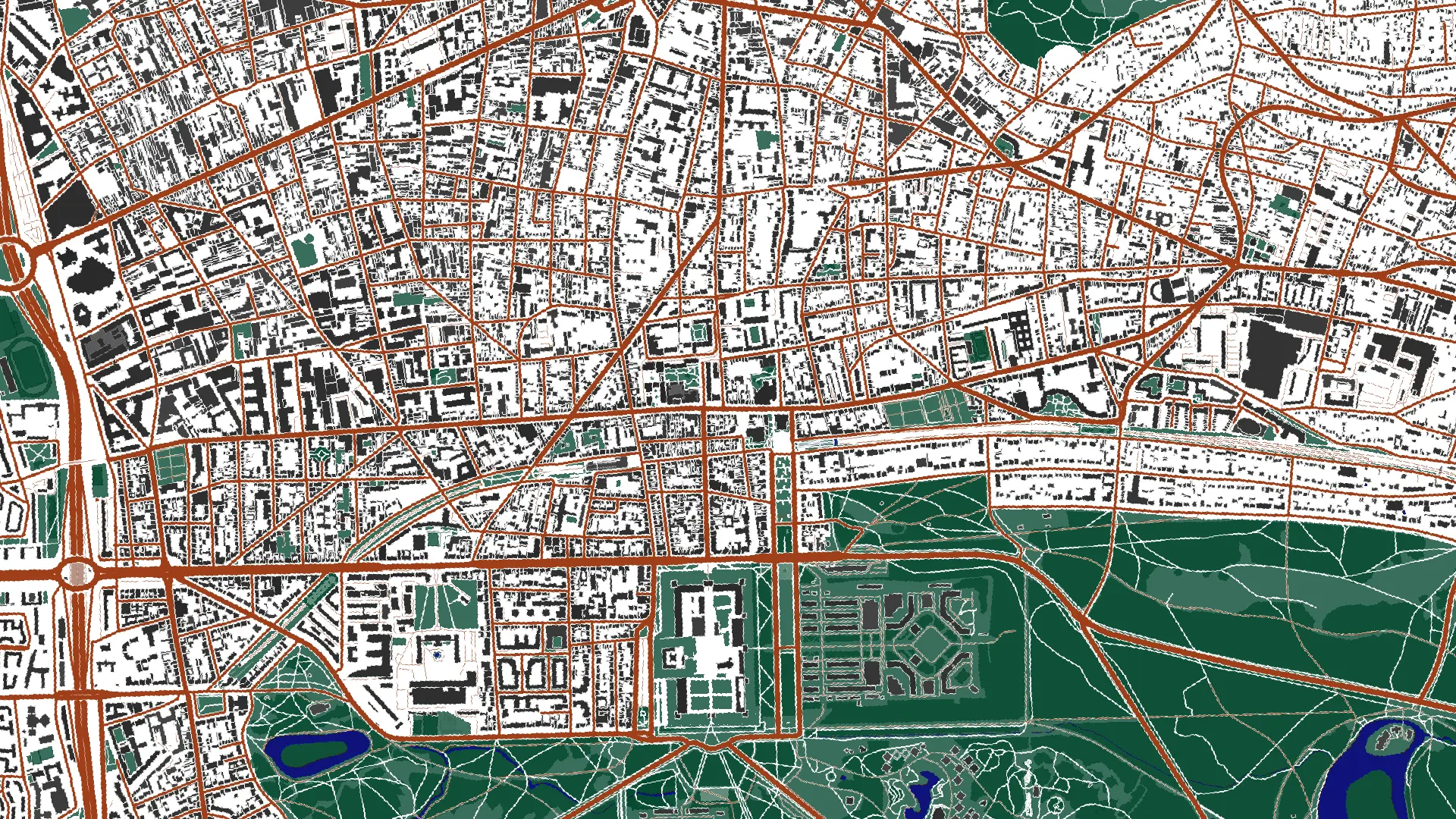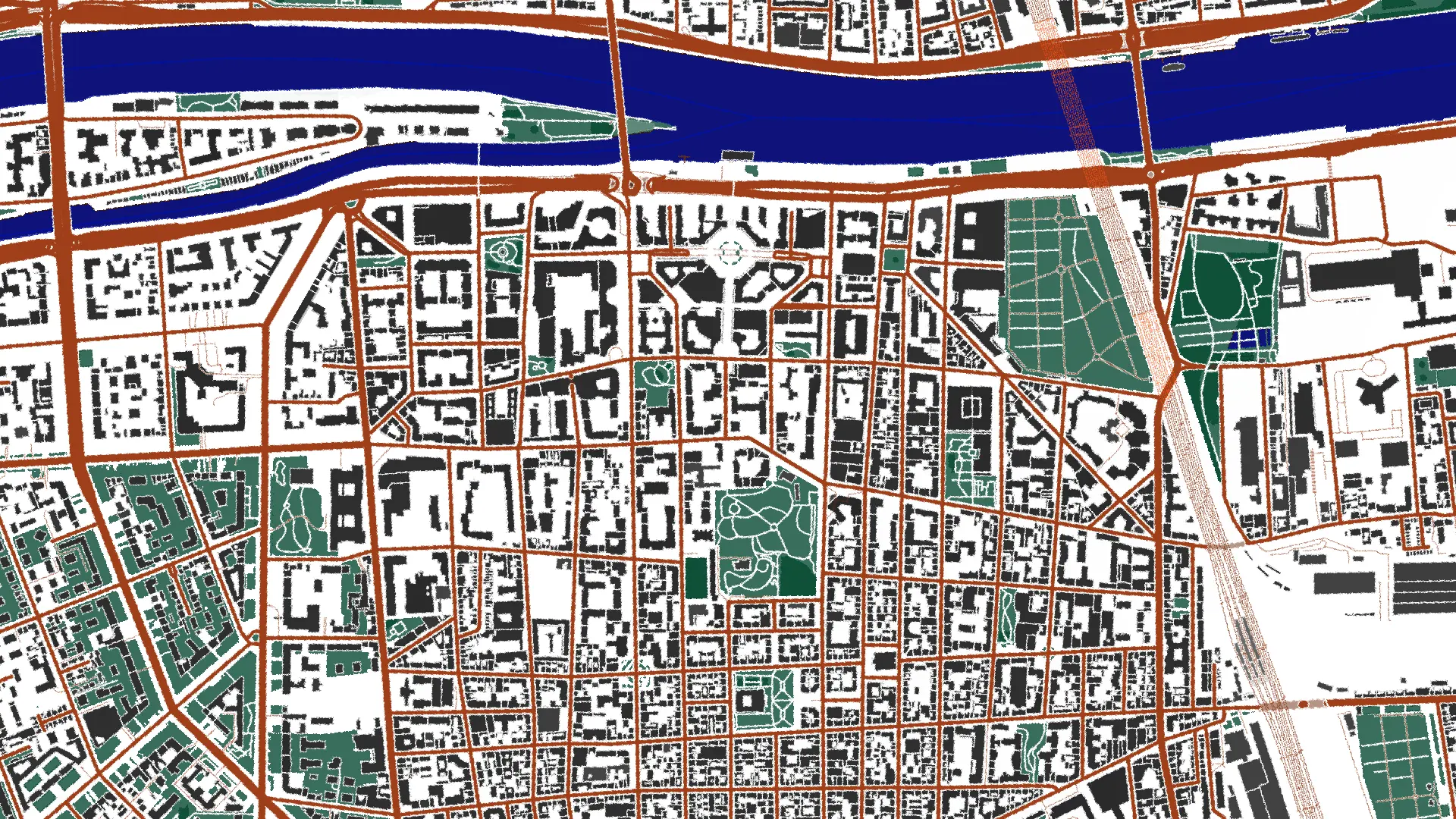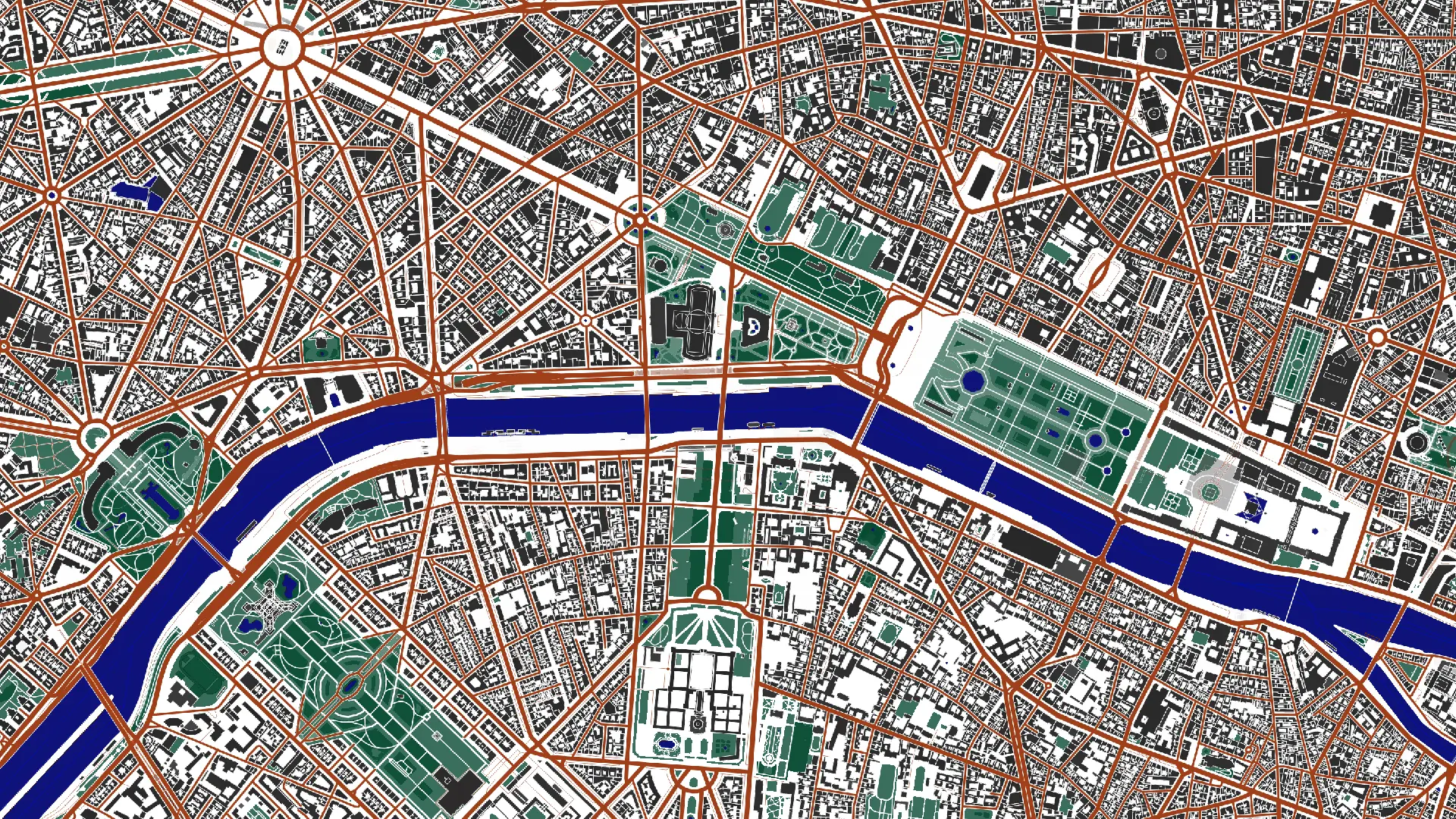Europe’s Top 5 Densely Inhabited Urban Enclaves
Europe, the cradle of civilization and a tapestry of diverse cultures, is home to some of the world’s most densely populated urban centers. As we traverse the Old World, we unveil the hidden gems, architectural marvels, and thriving communities that define these bustling metropolises. From the medieval charm of Vincennes to the opulence of Monaco, join us on a journey through Europe’s top five densest cities, where history and modernity converge, and life pulsates with vitality.
5. Vincennes, France – Where Medieval Heritage Meets Urban Splendor

Population Density: 14,000 people/km²
Nestled within the orbit of the City of Lights, Paris, Vincennes emerges as a captivating urban enclave with a rich tapestry of history and contemporary allure. With a population density of 14,000 people per square kilometer, it secures the fifth position on our list of Europe’s densest cities. Vincennes, a Parisian suburb, beckons travelers with its medieval Château de Vincennes and verdant parks that offer a respite from the urban hustle.
Vincennes, a picturesque Parisian suburb, offers a captivating blend of medieval heritage and contemporary urban living. With a population density of 14,000 people per square kilometer, it strikes a balance between the tranquility of the past and the vivacity of the present.
Château de Vincennes: The crowning jewel of Vincennes is undoubtedly the Château de Vincennes, a medieval fortress with a history dating back to the 12th century. Its towering keep, once a royal residence, stands as a sentinel to France’s rich history. Visitors can explore its well-preserved dungeons, climb the battlements for panoramic views, and step back in time within its hallowed halls.
Parks and Green Spaces: Amidst the urban bustle, Vincennes offers a sanctuary of greenery. The Bois de Vincennes, a sprawling park on the city’s eastern edge, is a verdant oasis where locals and tourists alike seek solace. With tranquil lakes, wooded paths, and the Parc Floral, a haven for botanical enthusiasts, it’s the ideal place to escape the city’s hustle and bustle.
Cultural Vibrancy: Vincennes is not just a repository of history; it also embraces modernity. The city’s vibrant cultural scene includes theaters, art galleries, and music festivals that cater to a discerning audience. The Théâtre de la Ville de Vincennes hosts a diverse range of performances, from classical ballet to avant-garde theater, ensuring that cultural connoisseurs have ample choices.
Vincennes may be on the outskirts of Paris, but its rich history, natural beauty, and cultural vibrancy make it a destination worth exploring. Whether you’re captivated by medieval fortresses, yearning for a tranquil day in the park, or seeking a dose of culture, this Parisian suburb has something for every traveler.
4. Athens, Greece – Bridging the Gap Between Ancient Splendors and Modern Vibrancy

Population Density: 15,000 people/km²
The cradle of democracy, Athens, takes the fourth spot with a population density of 15,000 people per square kilometer. In this ancient city, history seamlessly melds with a vibrant urban atmosphere. The Parthenon stands as a testament to Greece’s rich past, while the bustling streets of Monastiraki and the vibrant neighborhoods of Plaka and Psiri reflect the city’s dynamic present.
Athens, the cradle of Western civilization, effortlessly bridges the gap between its glorious ancient past and its dynamic present. With a population density of 15,000 people per square kilometer, the city pulses with history, culture, and a vibrant urban atmosphere.
The Acropolis: Dominating the Athens skyline is the Acropolis, an ancient citadel perched atop a rocky hill. Its crown jewel, the Parthenon, is a marvel of classical architecture and a symbol of Greece’s enduring legacy. As you ascend the sacred hill, you’ll be transported back in time, surrounded by the remnants of a civilization that laid the foundations of Western thought.
Monastiraki and Plaka: Descend from the Acropolis, and you’ll find yourself in Monastiraki, a bustling neighborhood where ancient and modern Athens converge. Its vibrant flea market is a treasure trove of antiques, souvenirs, and local delicacies. Nearby, Plaka’s charming streets beckon with traditional Greek tavernas, colorful bougainvillea, and an ambiance that transports you to a bygone era.
Psiri and Gazi: Athens also boasts a lively nightlife scene. The neighborhoods of Psiri and Gazi come alive after dark, with a plethora of bars, clubs, and music venues. Whether you’re in the mood for live jazz, electronic beats, or traditional Greek music, Athens has a nocturnal rhythm to suit every taste.
Athens, with its melding of antiquity and modernity
, invites travelers on a journey through time. It’s a city where history whispers from every ancient stone, where vibrant neighborhoods pulse with life, and where the warmth of Greek hospitality ensures you’ll feel like a welcomed guest in this ancient metropolis.
3. Levallois-Perret, France – Parisian Suburbia with Distinctive Elegance

Population Density: 16,000 people/km²
Just a stone’s throw away from the heart of Paris, Levallois-Perret claims the third spot on our list with a population density of 16,000 people per square kilometer. This densely populated suburb is a blend of residential tranquility and commercial vitality. Its tree-lined boulevards, chic boutiques, and proximity to the French capital make it an urban enclave par excellence.
Adjacent to the heart of Paris, Levallois-Perret exudes an understated elegance that distinguishes it from its bustling neighbor. With a population density of 16,000 people per square kilometer, this Parisian suburb offers a unique blend of residential tranquility and commercial vibrancy.
Architectural Beauty: Levallois-Perret’s tree-lined streets are a testament to Haussmannian architecture, reminiscent of the grand boulevards of Paris. The cityscape is dotted with charming Belle Époque buildings, reflecting an era of artistic flourish. Strolling through its avenues feels like a journey through the pages of history.
Shopping and Dining: Rue du Château, the city’s main thoroughfare, is lined with upscale boutiques, inviting cafes, and gourmet restaurants. It’s a haven for those seeking a taste of Parisian refinement without the frenetic pace of the city center. From fashion to gastronomy, Levallois-Perret offers a curated experience for discerning tastes.
Proximity to Paris: What sets Levallois-Perret apart is its proximity to Paris. Just a short metro ride away from the capital’s iconic landmarks, residents enjoy the best of both worlds—urban excitement and suburban tranquility. It’s an ideal location for those who seek a respite from the city’s hustle while remaining within arm’s reach of its cultural riches.
Levallois-Perret, with its distinctive elegance and Parisian flair, stands as a testament to the charm of suburban life. It’s a place where the past meets the present, where architectural beauty is a part of daily life, and where the essence of Paris is distilled into a tranquil enclave.
2. Paris, France – The Enigmatic Capital of France

Population Density: 21,000 people/km²
France’s iconic capital, Paris, takes the runner-up position with a staggering population density of 21,000 people per square kilometer. The City of Love, as it’s affectionately known, boasts world-famous landmarks like the Eiffel Tower, the Louvre Museum, and Notre-Dame Cathedral. But beyond these tourist magnets lies a city teeming with culture, fashion, gastronomy, and an indomitable spirit that has shaped the world.
Ah, Paris—the mere mention of its name conjures images of romance, art, and timeless elegance. With a population density of 21,000 people per square kilometer, the French capital is a city that needs no introduction. It is a tapestry of culture, history, and unbridled joie de vivre.
Architectural Icons: Paris boasts an unparalleled collection of architectural marvels. The Eiffel Tower, a global symbol of France, stands tall against the Parisian skyline, offering breathtaking views of the city. The Louvre Museum, home to the enigmatic Mona Lisa, houses an extensive collection that spans millennia. And the Gothic masterpiece, Notre-Dame Cathedral, exudes an air of mystique that has captivated generations.
Culinary Delights: Paris is a gastronomic paradise. From corner bistros to Michelin-starred restaurants, the city’s culinary scene is a journey of flavors. Indulge in buttery croissants, savor escargot in garlic butter, or relish the artistry of a perfectly crafted macaron. Parisian cuisine is a celebration of life’s pleasures.
Art and Culture: The City of Love is also a cultural mecca. The Left Bank, with its historic literary cafes, evokes the spirit of Hemingway and Fitzgerald. The Marais district showcases contemporary art galleries and trendy boutiques. And the annual Fête de la Musique turns the city into a symphony of melodies, celebrating music in its myriad forms.
Paris is more than a city; it’s a state of mind. It’s a place where beauty is found in every arrondissement, where every street corner tells a story, and where romance lingers in the air. To experience Paris is to fall under its spell, and once you do, you’ll understand why it’s a city that beckons you to return.
1. Monaco – Europe’s Pinnacle of Luxury and Opulence

Population Density: 25,000 people/km²
At the zenith of our list stands Monaco, the crown jewel of Europe’s densely inhabited urban enclaves. With a staggering population density of 25,000 people per square kilometer, it clinches the title of Europe’s densest city. Nestled along the French Riviera, Monaco is renowned for its luxurious lifestyle, glittering casinos, and high-rise buildings that kiss the Mediterranean sky. Here, opulence knows no bounds, and the boundaries between reality and fantasy blur in a playground for the elite.
Now that we’ve unveiled Europe’s top five densest cities, let’s delve deeper into each of these captivating urban centers, exploring their unique attributes, cultural riches, and the enchanting stories that make them quintessentially European.
At the pinnacle of our list stands Monaco, the crown jewel of Europe’s densely inhabited urban enclaves. With a population density of 25,000 people per square kilometer, this tiny principality on the French Riviera redefines opulence and extravagance.
A Playground for the Elite: Monaco’s reputation as a haven for the wealthy and famous is well-deserved. Its opulent casinos, including the iconic Casino de Monte-Carlo, have lured high-rollers for generations. The city-state’s tax haven status has attracted business magnates, celebrities, and royalty, making it a magnet for the world’s elite.
Mediterranean Splendor: Monaco’s coastline along the Mediterranean Sea is a spectacle of high-rise luxury. Lavish yachts dot the azure waters, and the Larvotto Beach offers a slice of paradise for sunseekers. The Japanese Gardens and the Exotic Garden provide respite amid the urban splendor, offering serene retreats with breathtaking views.
Cultural Charms: Beyond its glitzy facade, Monaco harbors cultural treasures. The Prince’s Palace, perched atop a rocky promontory, is a testament to the principality’s regal heritage. The Oceanographic Museum, founded by Prince Albert I, showcases marine wonders and scientific exploration.
Monaco’s allure lies not only in its extravagance but also in its commitment to sustainability and innovation. As a sovereign state, it continues to captivate the world with its luxurious lifestyle, breathtaking vistas, and the allure of the French Riviera at its doorstep.
Conclusion – Exploring Europe’s Densely Inhabited Urban Enclaves
In the mosaic of Europe’s urban landscape, these five densely populated cities stand as shining gems. From the medieval allure of Vincennes to the cosmopolitan charm of Athens, the understated elegance of Levallois-Perret, the timeless enchantment of Paris, and the opulence of Monaco, each city offers a unique glimpse into Europe’s multifaceted identity.
As we’ve traversed these urban enclaves, we’ve discovered the confluence of history and modernity, the vibrant tapestry of cultures, and the inexhaustible wellspring of human creativity. Europe’s densely inhabited cities are not merely geographical entities; they are living narratives, repositories of human endeavor, and symbols of the enduring spirit of the continent.
So, whether you seek to wander through the annals of history, indulge in culinary delights, bask in the glow of architectural marvels, or revel in opulence, Europe’s densest cities invite you to embark on a journey of discovery. As the sun sets over the Mediterranean or casts a golden hue on the Seine, you’ll find that these urban enclaves are not just destinations; they are experiences that linger in your heart long after you’ve bid them farewell.






